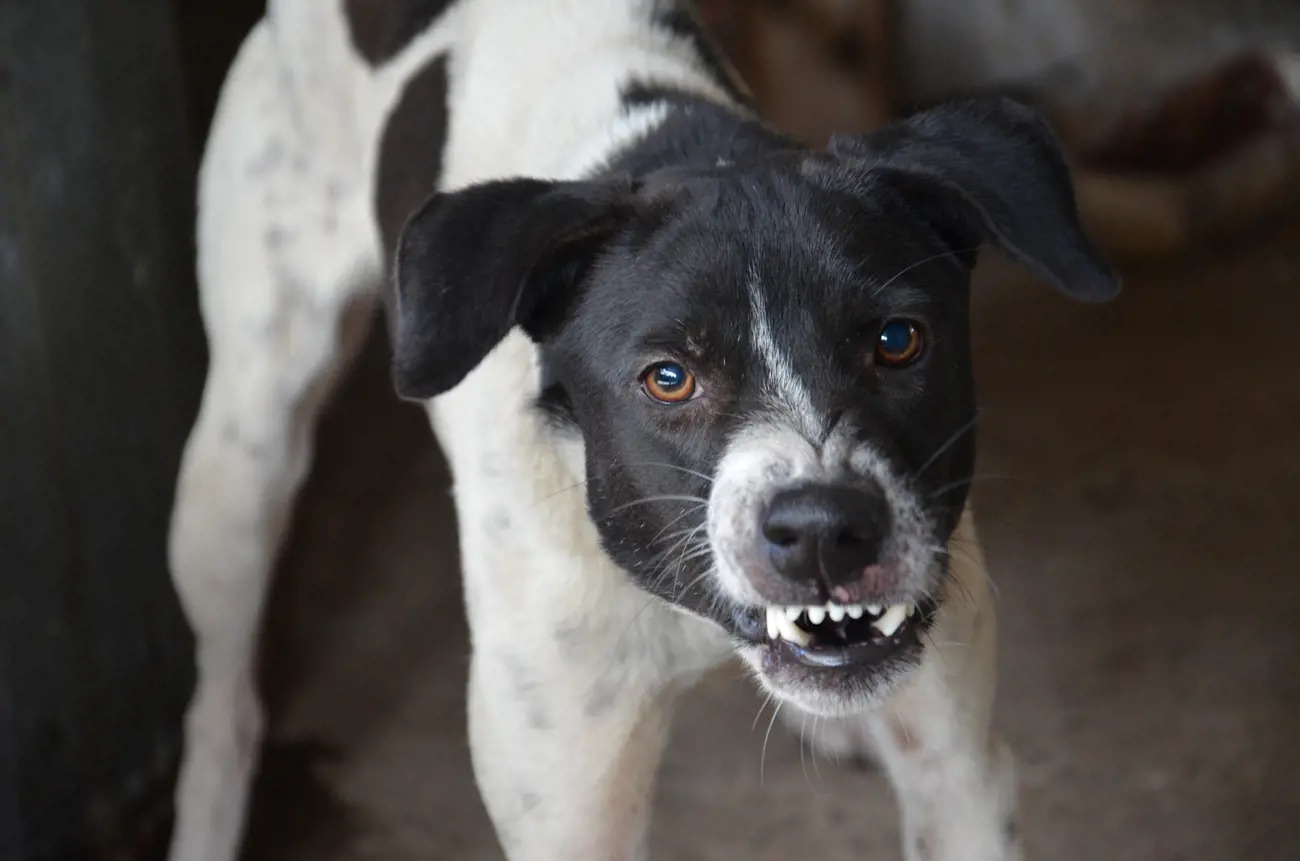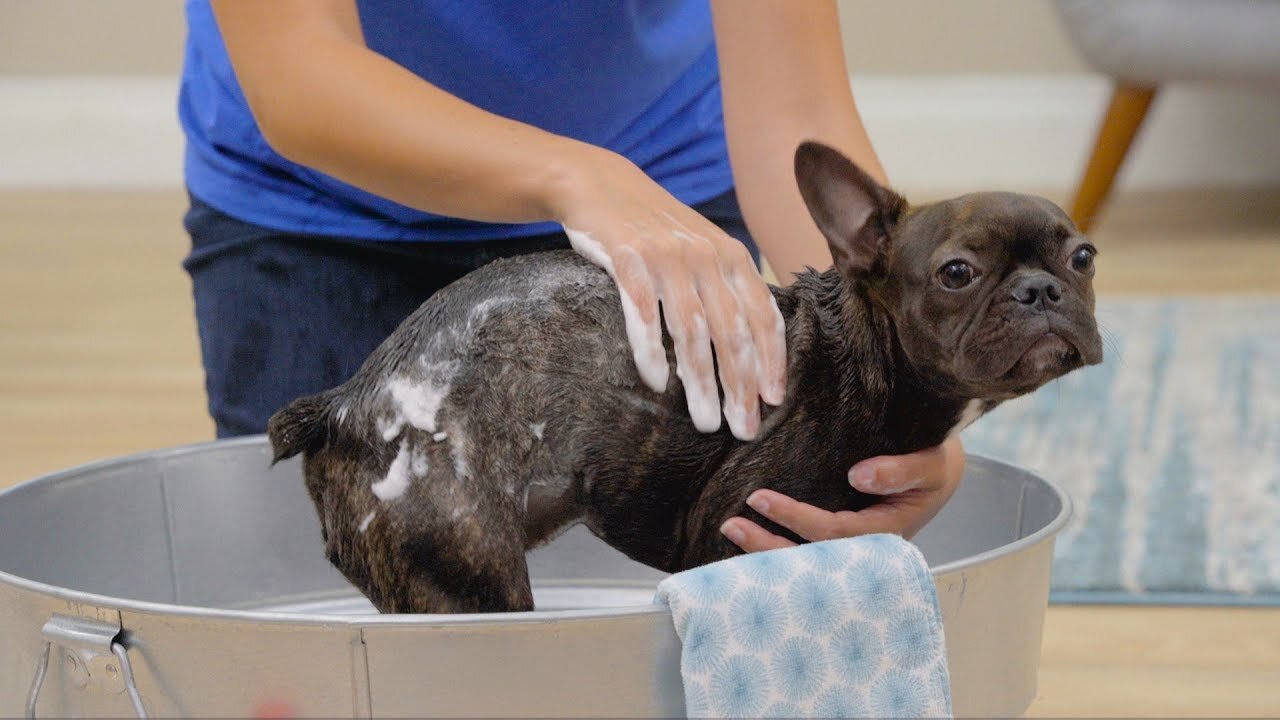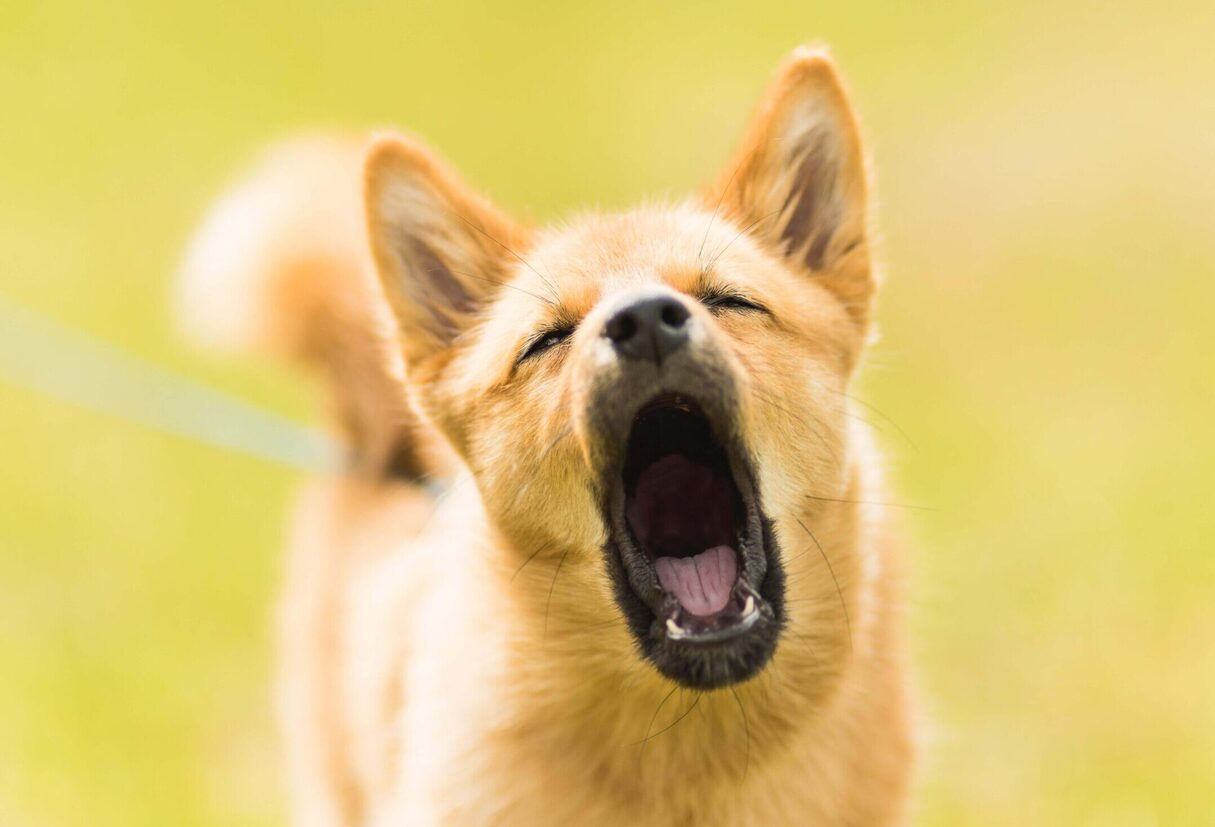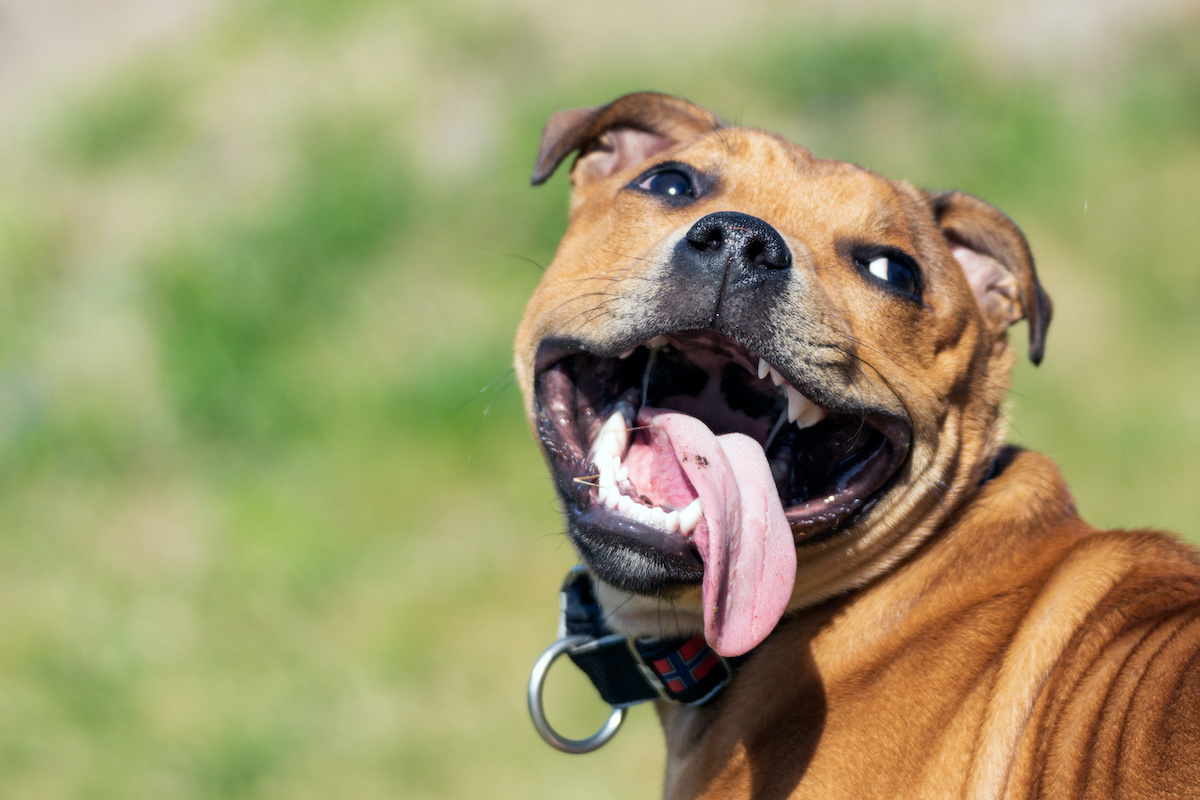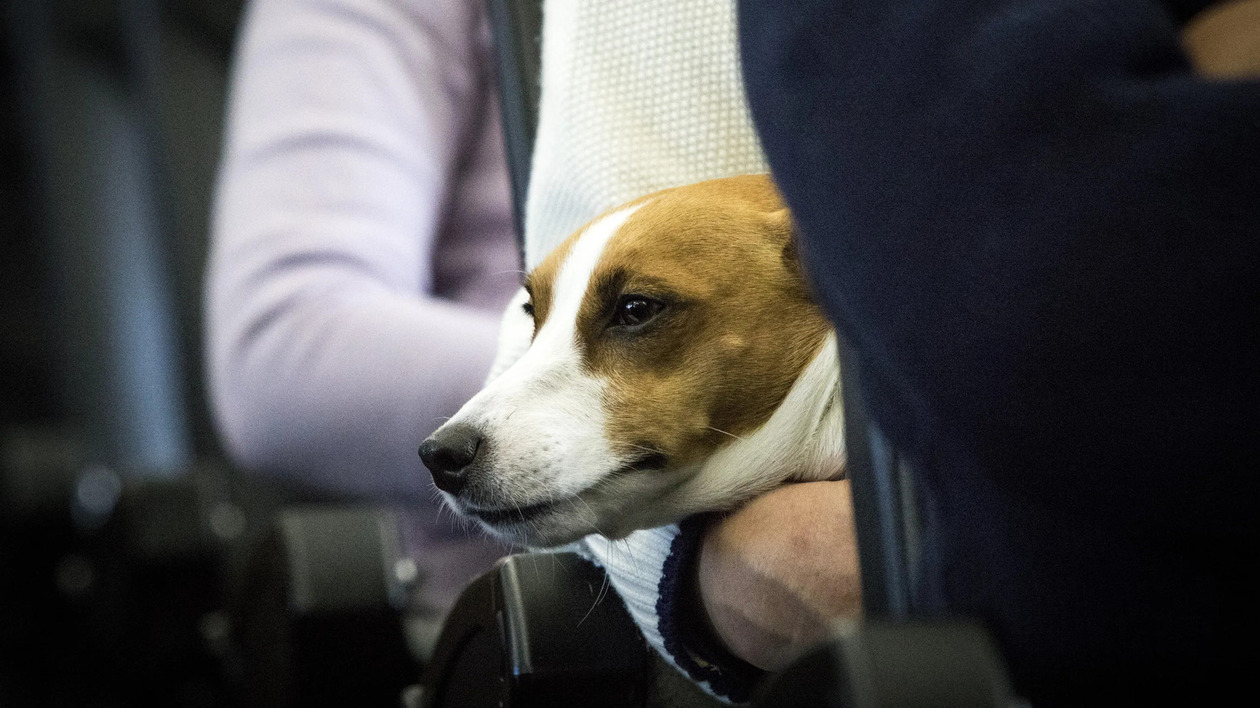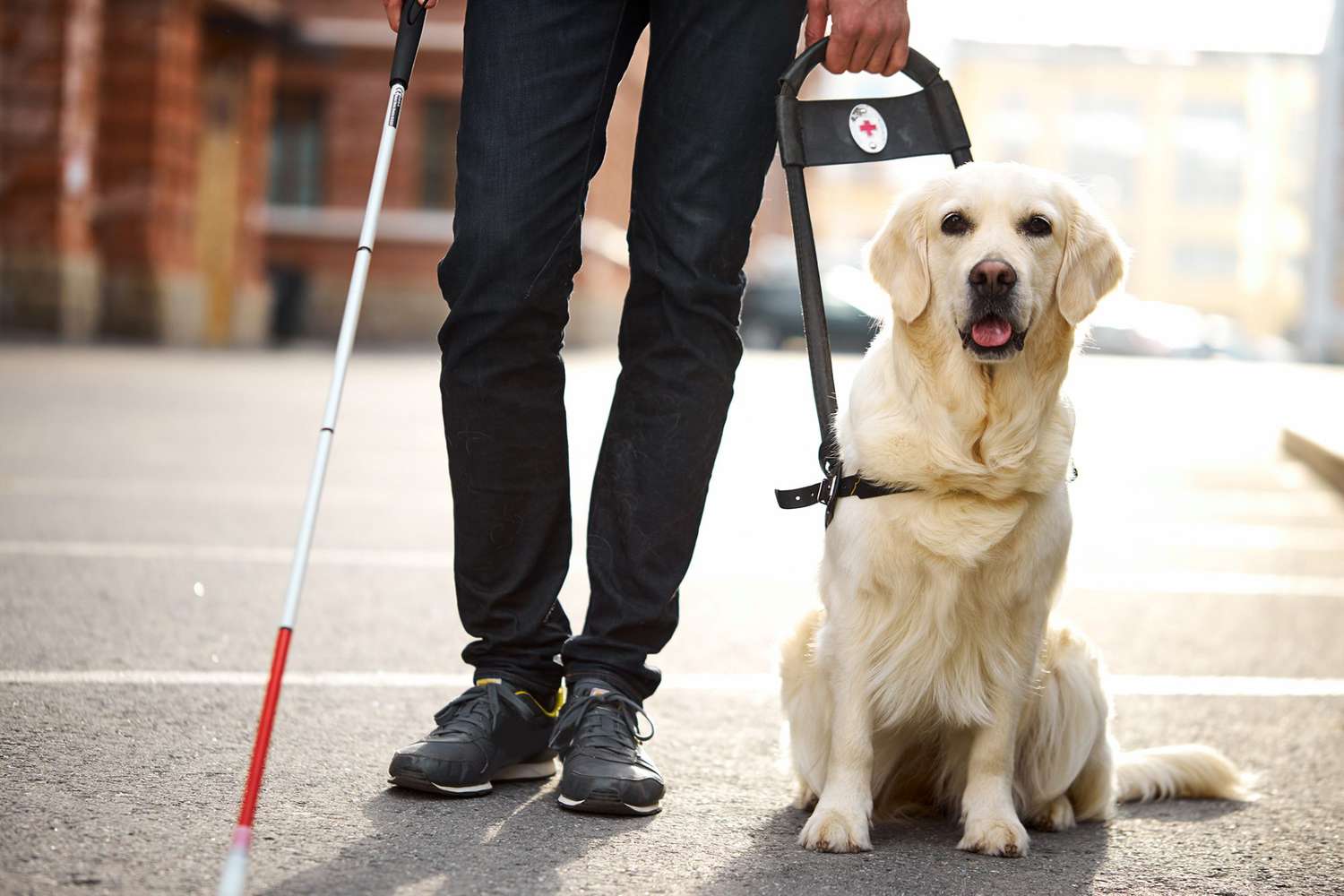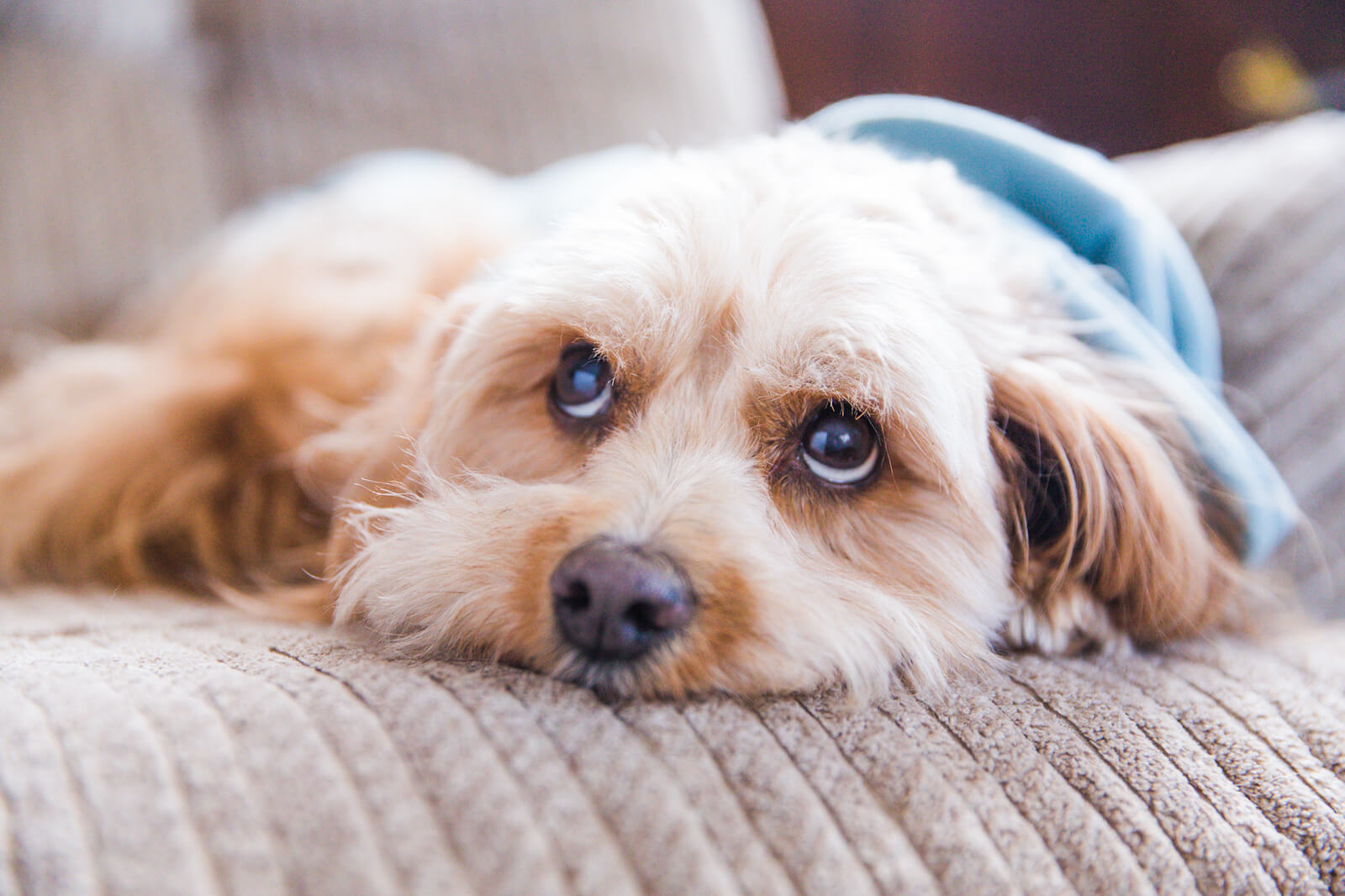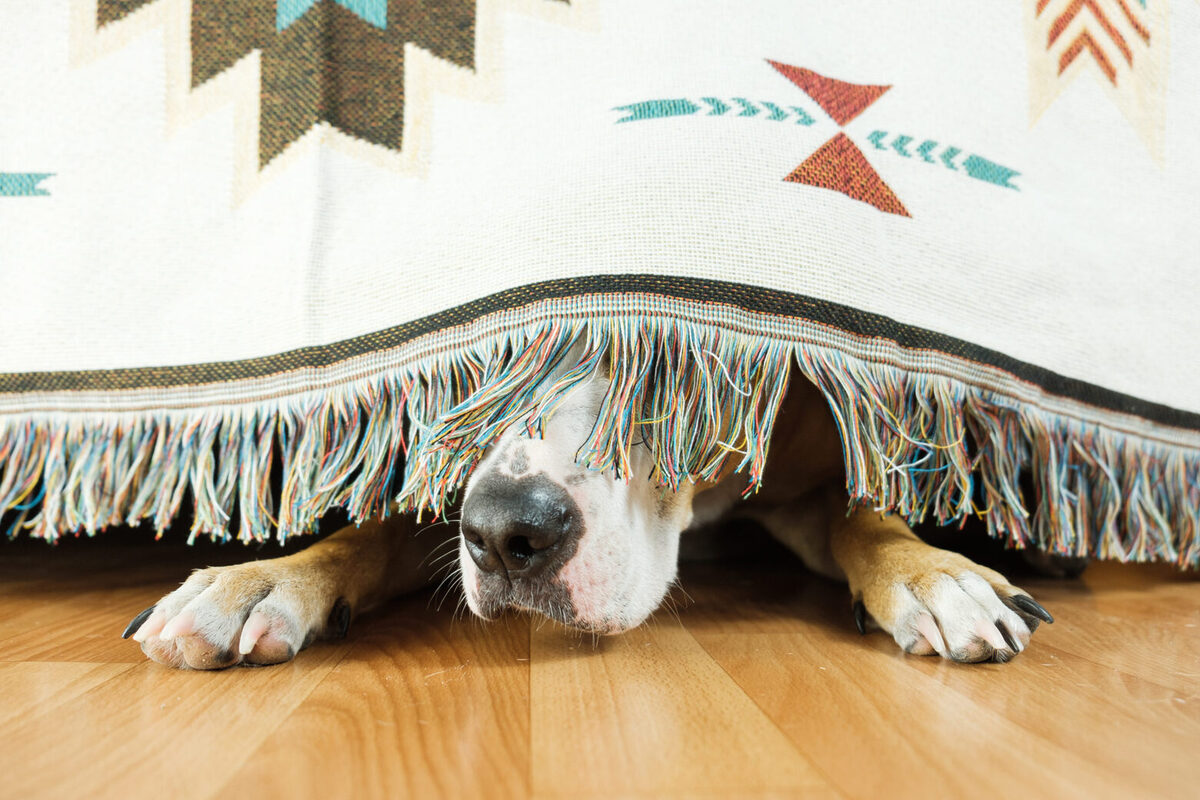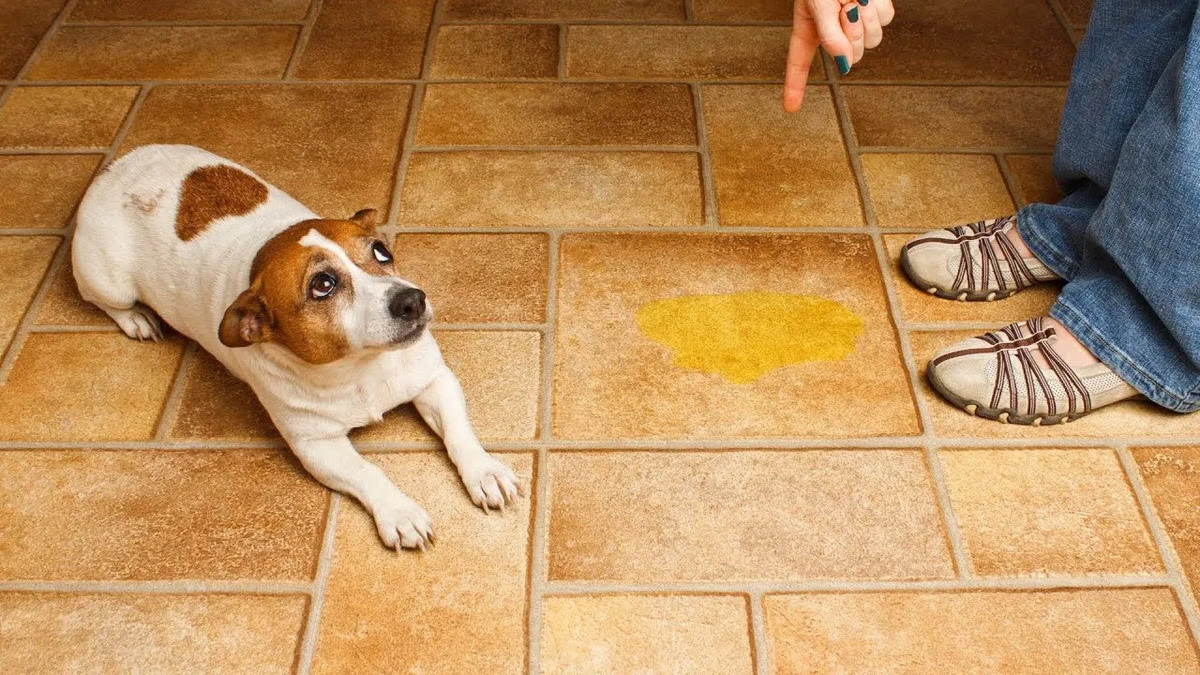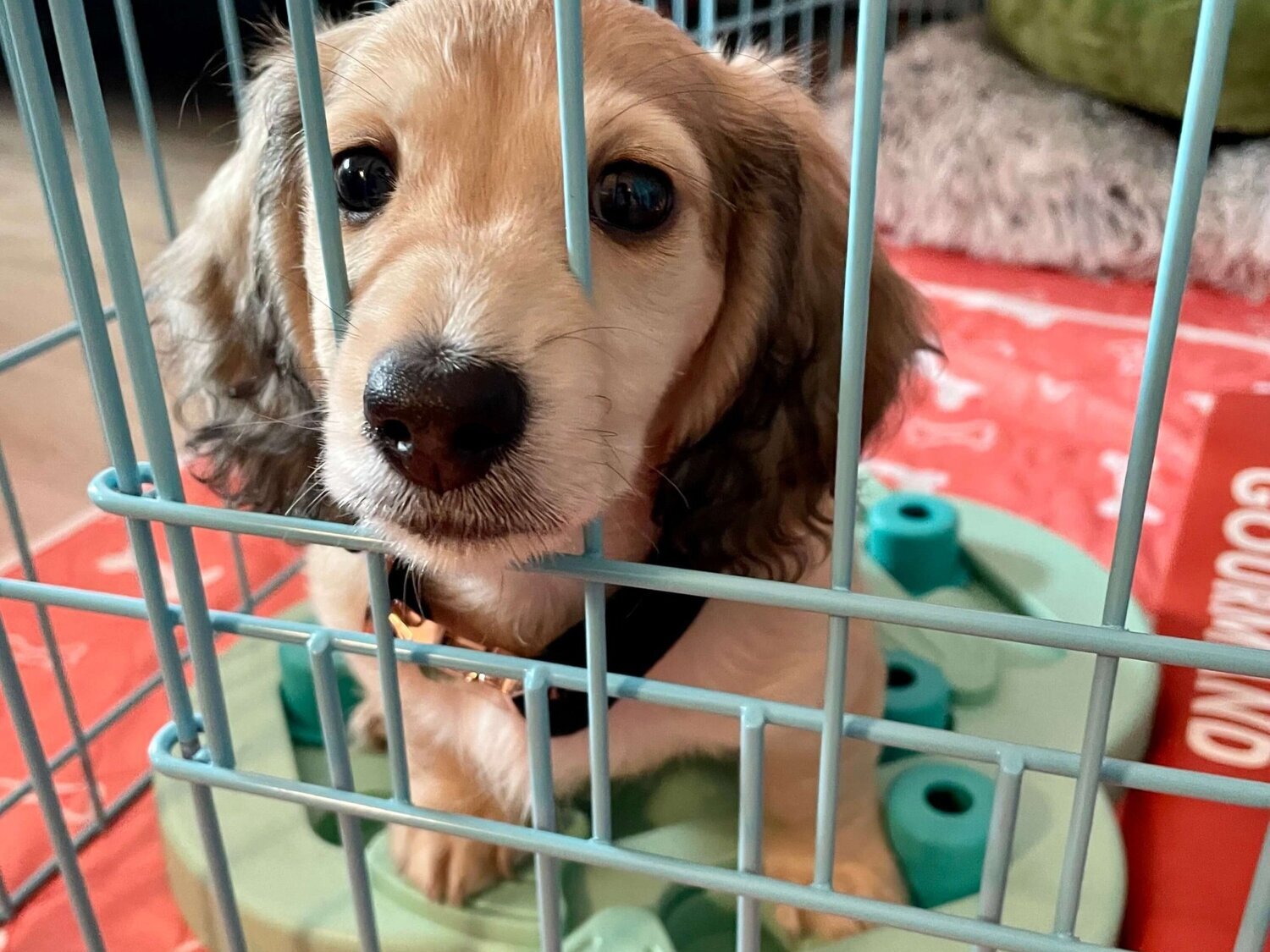Home>Health & Wellness>Behavior & Cognitive Care>How To Use Anxiety Wrap For Dogs


Behavior & Cognitive Care
How To Use Anxiety Wrap For Dogs
Published: January 28, 2024
Learn how to use anxiety wrap for dogs to provide behavior and cognitive care. Discover the benefits of using this tool to help your furry friend feel calm and secure.
(Many of the links in this article redirect to a specific reviewed product. Your purchase of these products through affiliate links helps to generate commission for Pawsomeoldies.com, at no extra cost. Learn more)
Table of Contents
Introduction
Anxiety is a common issue that affects many dogs, leading to distressing behaviors and a diminished quality of life. As a pet owner, witnessing your furry companion struggle with anxiety can be heartbreaking. Fortunately, there are various strategies and products available to help alleviate this distress, one of which is the anxiety wrap.
The use of anxiety wraps has gained popularity in recent years as a non-invasive and drug-free solution for managing canine anxiety. These wraps are designed to provide gentle, constant pressure to a dog's torso, similar to the comfort of a swaddling blanket for a baby. This pressure has a calming effect on the dog's nervous system, helping to reduce anxiety and stress-related behaviors.
Understanding the underlying causes of anxiety in dogs is crucial for addressing the issue effectively. Whether triggered by separation anxiety, thunderstorms, fireworks, or other stressors, anxiety can manifest in various ways, including excessive barking, destructive behavior, trembling, panting, and pacing. By recognizing these signs, pet owners can take proactive steps to support their dogs' emotional well-being.
In this article, we will delve into the world of anxiety wraps for dogs, exploring their benefits, proper usage, and tips for maximizing their effectiveness. By gaining a deeper understanding of anxiety wraps and how they can positively impact dogs' lives, pet owners can make informed decisions to support their beloved companions' mental and emotional health.
Understanding Anxiety in Dogs
Anxiety in dogs is a complex and often misunderstood condition that can significantly impact their well-being. Just like humans, dogs can experience a wide range of anxiety-related issues, which may stem from various triggers and manifest in diverse behavioral patterns. It's essential for pet owners to recognize the signs of anxiety in their canine companions to provide the necessary support and intervention.
Recognizing Anxiety in Dogs
Dogs can exhibit anxiety in response to a multitude of stimuli, including loud noises, unfamiliar environments, separation from their owners, or past traumatic experiences. Common signs of anxiety in dogs encompass both physical and behavioral indicators. Physically, a dog may display symptoms such as trembling, excessive panting, restlessness, and dilated pupils. On a behavioral level, anxiety can manifest as destructive chewing, incessant barking, pacing, or seeking excessive reassurance from their owners.
Types of Anxiety in Dogs
Anxiety in dogs can be categorized into various types, each with its unique triggers and manifestations. Separation anxiety is a prevalent form of anxiety in dogs, often observed when they are left alone for extended periods. Noise phobia, such as fear of thunderstorms or fireworks, is another common type of anxiety that can cause distress in dogs. Additionally, situational anxiety may arise in response to specific events or environments, leading to heightened stress and discomfort.
Impact on Overall Well-being
The presence of anxiety can have a profound impact on a dog's overall well-being, affecting their physical health, emotional stability, and quality of life. Prolonged anxiety can lead to increased cortisol levels, weakened immune function, and heightened susceptibility to other health issues. Moreover, chronic anxiety can diminish a dog's ability to experience joy, leading to a diminished quality of life and strained relationships with their human companions.
Read more: How To Use Frontline Flea And Tick For Dogs
Seeking Professional Guidance
Understanding anxiety in dogs is a crucial step toward providing effective support and intervention. If a pet owner suspects that their dog is experiencing anxiety, seeking guidance from a qualified veterinarian or animal behaviorist is highly recommended. Professional experts can offer tailored advice, behavior modification strategies, and, if necessary, recommend the use of anxiety wraps or other calming aids to alleviate the dog's distress.
By gaining a deeper understanding of anxiety in dogs and the diverse ways it can manifest, pet owners can cultivate a supportive and empathetic approach to addressing their canine companions' emotional well-being. This awareness empowers pet owners to take proactive steps in managing their dogs' anxiety and promoting a harmonious and stress-free environment for their beloved pets.
What is an Anxiety Wrap?
An anxiety wrap, also known as a pressure wrap or calming wrap, is a specialized garment designed to provide gentle, constant pressure to a dog's torso. This pressure is akin to the soothing sensation experienced when being swaddled, offering a sense of security and comfort. The wrap typically consists of a snug-fitting fabric that envelops the dog's torso, exerting a gentle, consistent pressure that promotes a calming effect on the nervous system.
The design of anxiety wraps is rooted in the concept of deep touch pressure, which has been recognized for its anxiety-reducing benefits in both humans and animals. By applying gentle pressure to specific areas of the body, these wraps can help alleviate stress and anxiety-related behaviors in dogs. The targeted pressure exerted by the wrap is believed to stimulate the release of endorphins, which are natural chemicals in the body associated with relaxation and well-being.
Anxiety wraps are often used to address various anxiety-related issues in dogs, including separation anxiety, noise phobias, general nervousness, and situational stress. Whether triggered by thunderstorms, fireworks, car rides, or other anxiety-inducing situations, the use of an anxiety wrap can provide a non-invasive and drug-free approach to promoting a sense of calm and security for dogs.
The effectiveness of anxiety wraps in managing canine anxiety has garnered attention from pet owners and professionals alike, with many reporting positive outcomes in terms of reducing anxiety-related behaviors and promoting a sense of emotional well-being in dogs. When used in conjunction with positive reinforcement training and a supportive environment, anxiety wraps can serve as a valuable tool in helping dogs cope with stress and anxiety.
In essence, an anxiety wrap serves as a comforting aid that harnesses the therapeutic benefits of gentle pressure to promote relaxation and emotional stability in dogs. By understanding the underlying principles of anxiety wraps and their potential impact on canine well-being, pet owners can make informed decisions regarding the use of these calming garments to support their beloved companions' mental and emotional health.
Benefits of Using an Anxiety Wrap for Dogs
Using an anxiety wrap for dogs offers a myriad of benefits that can positively impact their well-being and overall quality of life. These benefits extend beyond mere symptom management, encompassing a holistic approach to supporting dogs' emotional health and fostering a harmonious bond between pets and their owners.
1. Anxiety Reduction
Anxiety wraps provide gentle, consistent pressure to a dog's torso, promoting a sense of security and calm. This pressure mimics the soothing effects of swaddling, helping to alleviate anxiety-related behaviors triggered by various stressors such as separation anxiety, noise phobias, and situational stress. By reducing anxiety, dogs can experience a greater sense of emotional stability and comfort.
Read more: How To Use Tea Tree Oil For Dog Fleas
2. Non-Invasive Solution
Unlike pharmaceutical interventions, anxiety wraps offer a non-invasive and drug-free approach to managing canine anxiety. This makes them particularly appealing to pet owners seeking natural and gentle methods to support their dogs' emotional well-being without the potential side effects associated with medications.
3. Versatility
Anxiety wraps are versatile in their application, making them suitable for addressing a wide range of anxiety-related issues in dogs. Whether it's fear of thunderstorms, car rides, vet visits, or separation anxiety, the wrap's calming effects can help dogs navigate these stress-inducing situations with greater ease and composure.
4. Enhanced Comfort
The gentle pressure exerted by anxiety wraps creates a comforting sensation for dogs, akin to receiving a reassuring hug. This enhanced comfort can have a soothing effect on dogs, potentially reducing restlessness, trembling, and other physical manifestations of anxiety.
5. Support for Behavior Modification
When used in conjunction with positive reinforcement training and behavior modification strategies, anxiety wraps can aid in reshaping dogs' responses to anxiety triggers. By promoting a calmer state of mind, the wraps create an optimal environment for implementing training techniques aimed at addressing anxiety-related behaviors.
Read more: How To Ease Anxiety In Dogs
6. Improved Quality of Life
By mitigating anxiety and stress-related behaviors, anxiety wraps contribute to an improved quality of life for dogs. They enable pets to experience a greater sense of emotional well-being, leading to enhanced interactions with their human companions and a more fulfilling daily experience.
In essence, the benefits of using an anxiety wrap for dogs extend far beyond surface-level symptom management, encompassing a holistic approach to supporting dogs' emotional health and fostering a harmonious bond between pets and their owners. By leveraging the therapeutic benefits of anxiety wraps, pet owners can empower their canine companions to lead happier, more balanced lives.
How to Use an Anxiety Wrap for Dogs
Using an anxiety wrap for dogs requires a thoughtful and considerate approach to ensure its effectiveness in promoting a sense of calm and security for your furry companion. Here's a comprehensive guide on how to use an anxiety wrap for dogs:
1. Proper Sizing
Before using an anxiety wrap, it's crucial to ensure that it fits your dog properly. Most anxiety wraps come in various sizes, so selecting the right size is essential for optimal comfort and effectiveness. The wrap should fit snugly around your dog's torso without being too tight or restrictive, allowing for natural movement while providing gentle, consistent pressure.
2. Familiarization
Introduce the anxiety wrap to your dog in a gradual and positive manner. Allow your dog to sniff and explore the wrap before putting it on. This helps familiarize your dog with the garment and creates a positive association with its presence, reducing any potential apprehension.
3. Calm Environment
Choose a quiet and familiar environment for the initial introduction of the anxiety wrap. Minimize distractions and create a serene atmosphere to help your dog feel at ease during the wrapping process.
4. Gentle Application
When applying the anxiety wrap, do so gently and with reassurance. Place the wrap around your dog's torso, ensuring that it is snug but not constricting. The wrap should exert gentle, consistent pressure without causing discomfort.
5. Monitoring
Once the anxiety wrap is in place, observe your dog's behavior closely. Look for signs of relaxation, reduced restlessness, and a calmer demeanor. It's essential to monitor your dog's response to the wrap to gauge its effectiveness and make any necessary adjustments.
6. Positive Reinforcement
While your dog is wearing the anxiety wrap, provide positive reinforcement in the form of soothing words, gentle petting, or favorite treats. This helps create a positive association with the wrap and reinforces the calming effects it provides.
Read more: How To Help Dogs With Anxiety At Night
7. Duration of Use
The duration of wearing the anxiety wrap can vary depending on your dog's needs and the specific anxiety triggers being addressed. Some dogs may benefit from wearing the wrap for short periods during stressful situations, while others may find comfort in wearing it for longer durations.
8. Consistent Use
Consistency is key when using an anxiety wrap for dogs. Incorporate the wrap into your dog's routine as needed, especially during anxiety-inducing events or situations. Consistent use can help reinforce the calming effects of the wrap and support your dog's emotional well-being over time.
By following these guidelines and being attentive to your dog's responses, you can effectively use an anxiety wrap to provide comfort and support for your canine companion. With patience and a compassionate approach, the anxiety wrap can become a valuable tool in helping your dog navigate stressful circumstances with greater ease and composure.
Tips for Using an Anxiety Wrap Effectively
-
Customization: Every dog is unique, and their response to anxiety wraps may vary. Take the time to observe your dog's comfort level and behavior while wearing the wrap. Some dogs may benefit from a tighter fit, while others may prefer a slightly looser application. Customizing the fit of the wrap to suit your dog's preferences can enhance its effectiveness in providing a sense of security and calm.
-
Gradual Acclimatization: Introduce the anxiety wrap gradually to allow your dog to acclimate to its presence. Start by placing the wrap loosely on your dog for short periods, gradually increasing the duration as your dog becomes more accustomed to wearing it. This gradual approach can help minimize any initial resistance or discomfort, allowing your dog to embrace the wrap as a source of comfort.
-
Positive Associations: Associate the presence of the anxiety wrap with positive experiences for your dog. Offer treats, verbal praise, or favorite toys while your dog is wearing the wrap to create a positive association. This can reinforce the calming effects of the wrap and help your dog view it as a source of comfort rather than a source of stress.
-
Regular Maintenance: Ensure that the anxiety wrap is clean and well-maintained to uphold its effectiveness. Regularly wash the wrap according to the manufacturer's instructions to keep it free from dirt, odors, and debris. A clean and fresh-smelling wrap can contribute to a positive and soothing experience for your dog.
-
Behavioral Support: While the anxiety wrap can help alleviate stress and anxiety, combining its use with behavioral support and positive reinforcement techniques can further enhance its effectiveness. Consider incorporating calming activities, such as gentle massage or soothing music, to create a holistic approach to supporting your dog's emotional well-being.
-
Consultation with Professionals: If you encounter challenges or have specific concerns regarding the use of an anxiety wrap for your dog, seek guidance from a qualified veterinarian or animal behaviorist. Professional insights can offer tailored recommendations and strategies to optimize the effectiveness of the anxiety wrap in addressing your dog's unique anxiety-related issues.
-
Monitoring and Adjustment: Continuously monitor your dog's response to the anxiety wrap and be open to making adjustments as needed. Pay attention to subtle cues of relaxation, reduced anxiety-related behaviors, and overall comfort while wearing the wrap. Making minor adjustments to the fit or duration of use based on your dog's responses can contribute to its effectiveness.
-
Consistent Support: Incorporate the use of the anxiety wrap into your dog's routine consistently, especially during known anxiety triggers or stressful events. Consistent support from the wrap can help your dog build resilience and cope with anxiety-inducing situations more effectively over time.
By implementing these tips and being attuned to your dog's individual needs, you can maximize the effectiveness of the anxiety wrap in providing comfort and support for your beloved canine companion. With patience, attentiveness, and a nurturing approach, the anxiety wrap can become an invaluable tool in promoting your dog's emotional well-being and enhancing their overall quality of life.
Conclusion
In conclusion, the use of anxiety wraps for dogs presents a compassionate and effective approach to addressing canine anxiety and promoting emotional well-being. By harnessing the therapeutic benefits of gentle, constant pressure, anxiety wraps offer a non-invasive and versatile solution for managing a wide range of anxiety-related issues in dogs. From separation anxiety to noise phobias and situational stress, these wraps provide a source of comfort and security, enabling dogs to navigate challenging circumstances with greater ease and composure.
Understanding the diverse manifestations of anxiety in dogs and the profound impact it can have on their overall well-being is paramount for pet owners. By recognizing the signs of anxiety and seeking proactive interventions, such as the use of anxiety wraps, pet owners can play a pivotal role in supporting their canine companions' emotional health. The benefits of using anxiety wraps extend beyond mere symptom management, encompassing a holistic approach to fostering a harmonious bond between pets and their owners.
When using anxiety wraps for dogs, it is essential to approach their application with patience, attentiveness, and a deep understanding of each dog's unique needs. Customizing the fit of the wrap, gradually acclimating dogs to its presence, and creating positive associations are key elements in maximizing its effectiveness. Additionally, combining the use of anxiety wraps with behavioral support, regular maintenance, and consistent support can further enhance their impact on dogs' emotional well-being.
By incorporating these strategies and being attuned to dogs' responses, pet owners can empower their beloved companions to lead happier, more balanced lives. The use of anxiety wraps aligns with a nurturing and empathetic approach to supporting dogs' emotional health, ultimately contributing to a more fulfilling and harmonious relationship between pets and their human companions.
In essence, anxiety wraps serve as a valuable tool in the holistic care of dogs, providing a source of comfort, security, and emotional support. By embracing the therapeutic benefits of anxiety wraps and integrating them into dogs' routines with care and consideration, pet owners can make a meaningful difference in their canine companions' lives, fostering a sense of calm, resilience, and emotional well-being.
